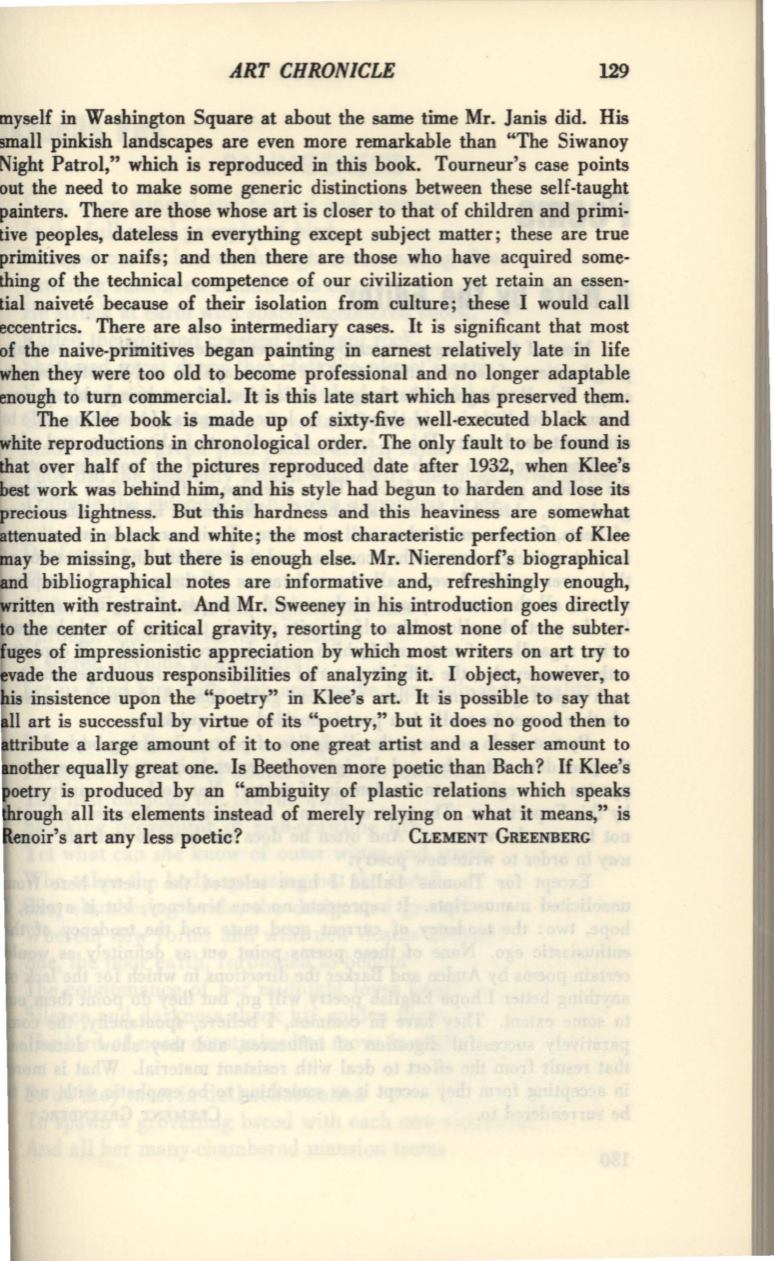
ART CHRONICLE
129
yself in Washington Square at about the same time Mr. Janis did. His
mall pinkish landscapes are even more remarkable than "The Siwanoy
ight Patrol," which is reproduced in this hook. Tourneur's case points
ut the need to make some generic distinctions between these self·taught
ainters. There are those whose art is closer to that of children and primi·
ive peoples, dateless in everything except subject matter; these are true
rimitives or naifs; and then there are those who have acquired some–
hing of the technical competence of our civilization yet retain an essen–
ial naivete because of their isolation from culture; these I would call
ccentrics. There are also intermediary cases. It is significant that most
f the naive-primitives began painting in earnest relatively late in life
hen they were too old to become professional and no longer adaptable
ough to turn commercial. It is this late start which has preserved them.
The Klee hook is made up of sixty-five well-executed black and
hite reproductions in chronological order. The only fault to he found is
at over half of the pictures reproduced date after 1932, when Klee's
est work was behind him, and his style had begun to harden and lose its
recious lightness. But this hardness and this heaviness are somewhat
ttenuated in black and white; the most characteristic perfection of Klee
ay he missing, hut there is enough else. Mr. Nierendorf's biographical
d bibliographical notes are informative and, refreshingly enough,
itten with restraint. And Mr. Sweeney in his introduction goes directly
o the center of critical gravity, resorting to almost none of the suhter–
uges of impressionistic appreciation by which most writers on art try to
vade the arduous responsibilities of analyzing it. I object, however, to
is
insistence upon the "poetry" in Klee's art. It is possible to say that
ll art is successful by virtue of its "poetry," hut it does no good then to
ttrihute a large amount of it to one great artist and a lesser amount to
other equally great one. Is Beethoven more poetic than Bach?
If
Klee's
oetry is produced by an "ambiguity of plastic relations which speaks
rough all its elements instead of merely relying on what
it
means," is
enoir's art any less poetic?
CLEMENT GREENBERG


